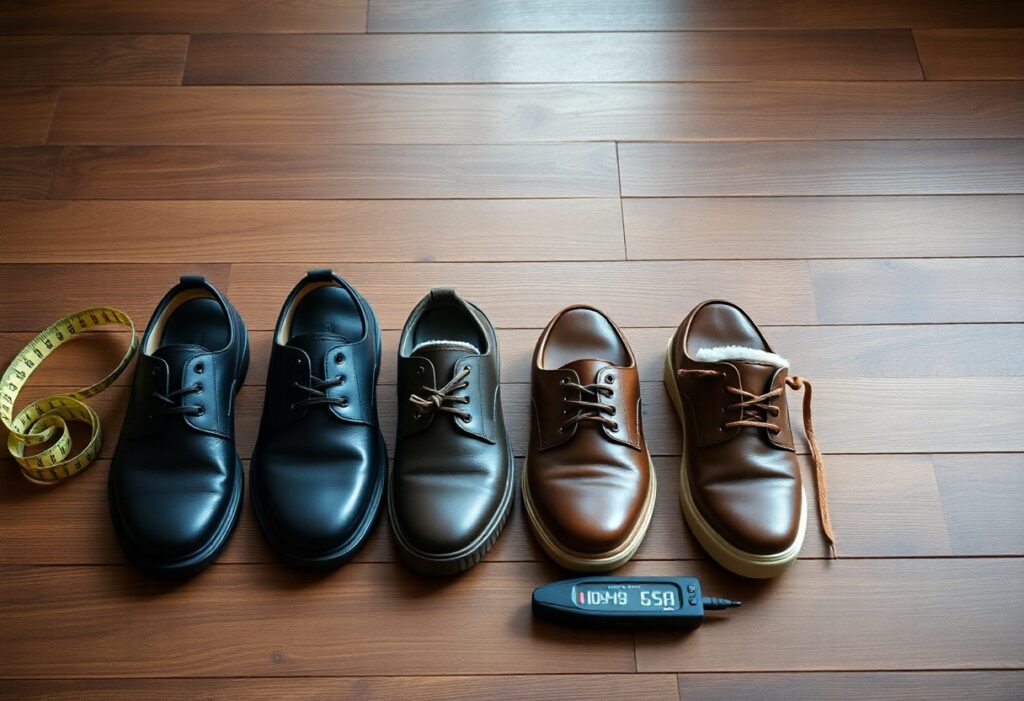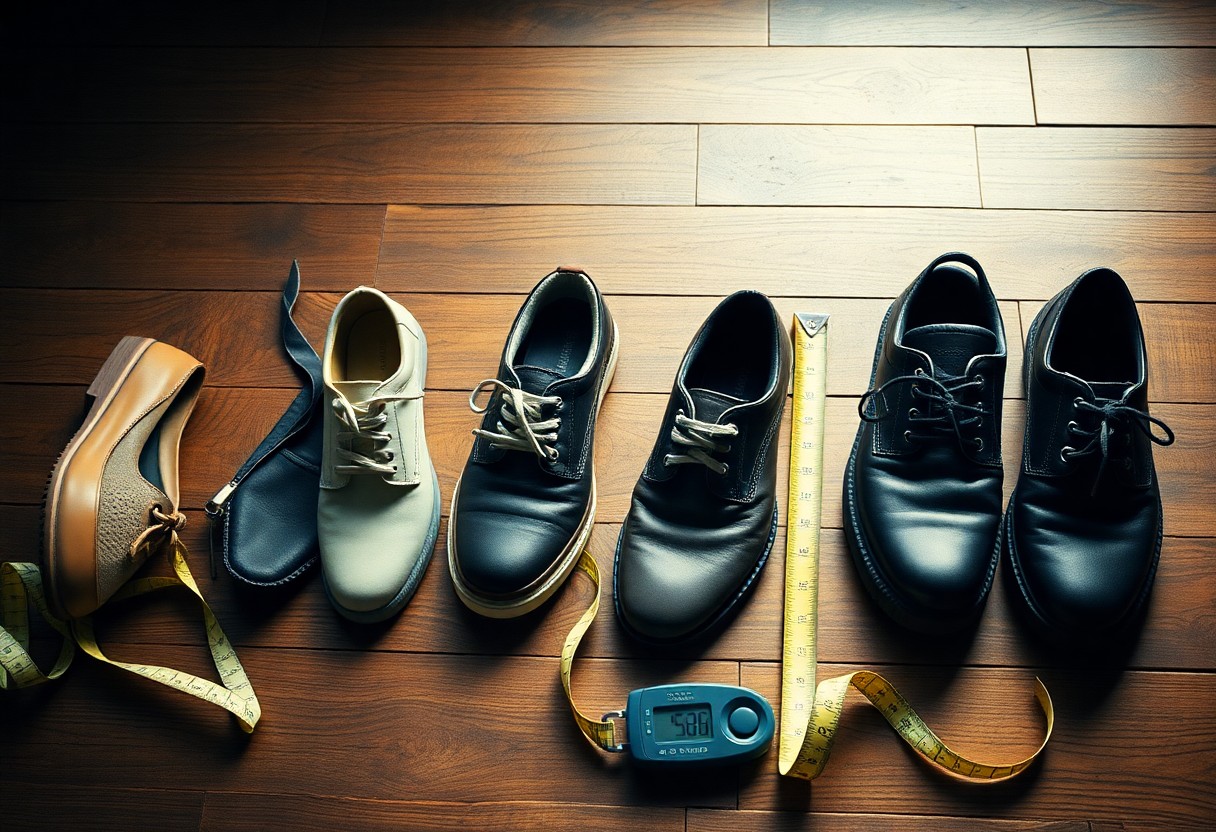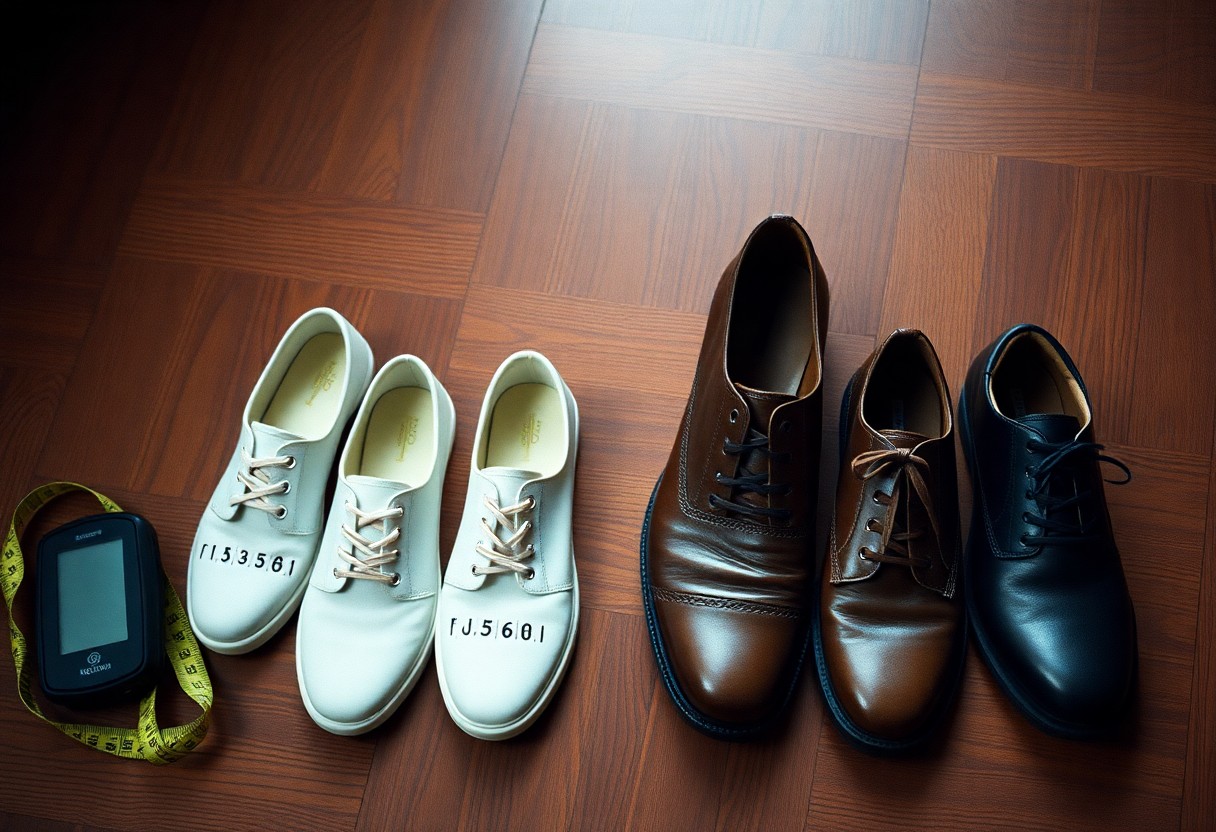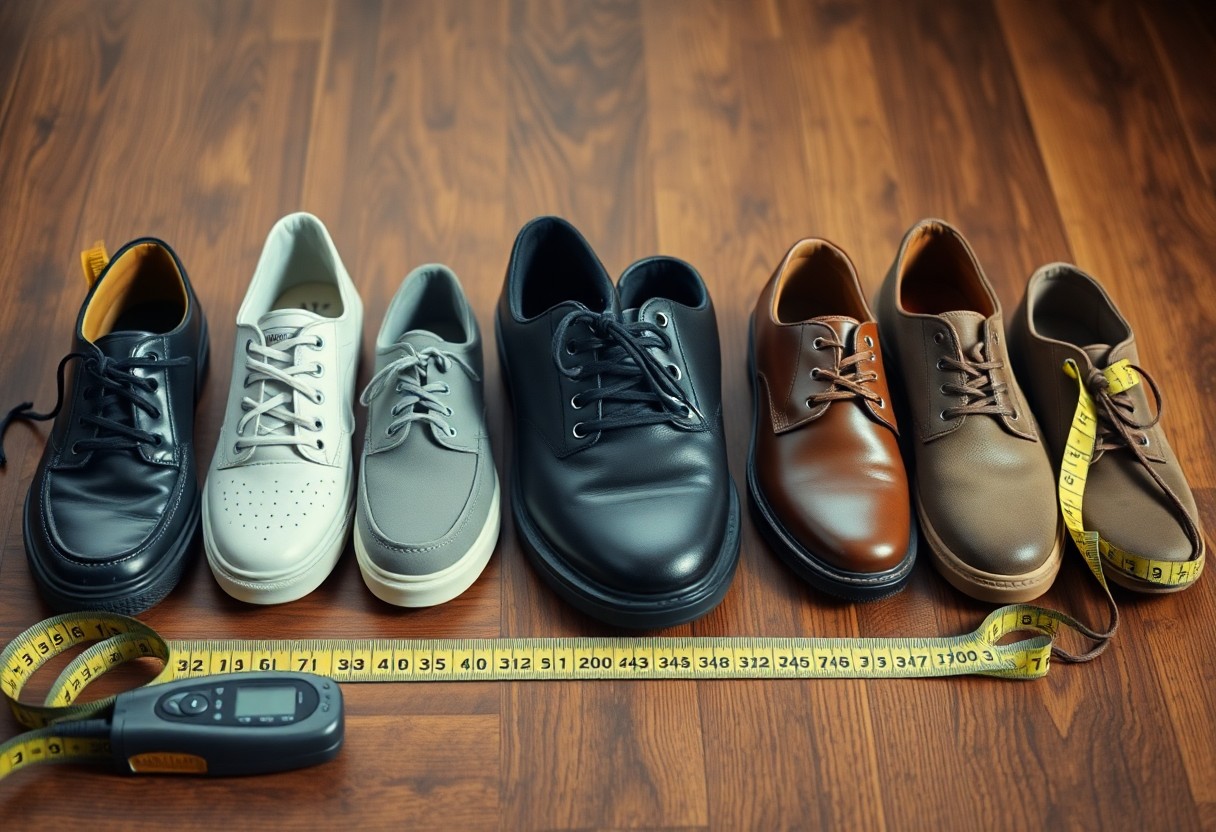
Understanding the significance of selecting shoes with the correct width is crucial for preserving your overall foot well-being. Wearing shoes that fit appropriately can greatly reduce foot pain and prevent various health complications. When shopping for footwear, it’s vital to pay attention to both the length and width of the shoes to achieve an ideal fit. Opting for shoes with the right width not only improves your stability and blood circulation but also lowers the risk of developing blisters and other common foot problems. To determine your perfect shoe width, measure the broadest part of your foot and refer to standardized width charts. Many shoppers mistakenly focus only on length, overlooking the fact that proper width is equally essential for daily comfort and foot health.
Effective Methods for Measuring Your Feet to Ensure Optimal Shoe Fit
The best approach for determining your shoe width is to measure your feet later in the day, when they are likely to have expanded. Foot width can change by as much as half an inch throughout the day, making evening measurements the most reliable for fit. To accomplish this, stand on a sheet of paper and trace around your foot, ensuring the most accurate measurement. This straightforward technique can help you discover shoes that not only fit well but also provide the comfort and support your feet require for daily activities.
Accurate Techniques for Measuring Foot Width
Alongside a standard ruler, utilizing a Brannock Device is beneficial. This specialized tool, found in most shoe stores, accurately measures foot size. It specifically measures the widest part of your foot, usually across the ball area. For the best results, measure both feet while standing, since it’s common for one foot to be slightly larger than the other. This way, you can select shoes that accommodate the larger foot, thus preventing discomfort during wear and enhancing your overall footwear experience.
Common Pitfalls to Avoid When Selecting Shoe Width
One of the most common mistakes in choosing shoe width is overlooking the importance of width measurements. Many individuals focus solely on length, which can lead to discomfort and a variety of potential foot issues. Other frequent errors include measuring feet while seated and mistakenly believing that foot width remains unchanged throughout life. Recognizing that wearing shoes that are too narrow can result in serious foot ailments, such as bunions, corns, and hammertoes, is crucial. Factors like weight gain, pregnancy, or aging can affect foot size, making it essential to measure your feet annually. Selecting the appropriate width can help prevent blisters, calluses, and persistent foot pain.

Essential Guide to Shoe Width Systems and Standards for a Comfortable Fit
Becoming familiar with various shoe width systems is essential for achieving comfort and maintaining foot health. Different brands and countries utilize distinct measurement standards, so understanding these systems can assist you in selecting footwear that fits properly and avoids foot-related issues. By learning how width is categorized, you can make informed decisions when choosing shoes that cater to your specific requirements.
Understanding Letter-Based Width Scales for Better Shoe Fitting
When shopping for shoes, widths are commonly labeled from AA to EE. For women, a standard medium width is B, while for men, it is D. Narrow widths are classified from AA to B, while wide widths range from D to EE. This letter-based system is intended to help you identify the right fit based on your foot shape, ensuring that your shoes feel comfortable and provide the necessary support for your daily activities.
International Width Measurement Standards and Their Importance
When shopping internationally, you may encounter various measurement systems. For example, European sizes are based on millimeters, while UK sizes follow distinct width standards. Your US shoe size may differ from international measurements by one to two width sizes. Therefore, it is essential to always check the brand’s size chart when purchasing shoes from overseas. Japanese shoes often run narrower, while European brands typically feature a wider toe box. To ensure the best fit, measuring your feet in millimeters provides the most accurate reference for international purchases.

The Impact of Shoe Construction on Fit and Comfort
Understanding shoe construction is vital for making informed decisions about your footwear. The way a shoe is designed significantly affects how it fits and feels on your feet. Your overall comfort is closely linked to how the upper part of the shoe connects with the sole and the flexibility of materials around the widest part of your foot. By selecting shoes with thoughtful construction, you can significantly improve your comfort and support throughout the day.
The Advantages of Natural Materials in Footwear
Shoes crafted from genuine leather offer outstanding breathability and adaptability. Leather possesses a natural ability to stretch and conform to your foot shape over time, resulting in a customized fit. Studies reveal that leather shoes can expand by up to 30% of their original width, making them an excellent choice for individuals with varying foot widths who prioritize comfort and flexibility.
Durability and Reliability of Synthetic Shoe Materials
The synthetic materials available today provide consistent width measurements and exceptional durability. These modern materials protect your feet while offering water resistance and enhanced breathability. Many synthetic shoes now include mesh panels that improve airflow and flexibility. Additionally, advancements in synthetic materials have incorporated comfort features like memory foam and gel inserts. As a result, shoes now blend stable width measurements with targeted cushioning, ensuring excellent support during wear. Recent research indicates that synthetic materials can maintain their shape up to 40% longer than traditional materials, ensuring your shoes retain their proper width throughout their lifespan.

Recognizing Signs of Proper Shoe Width for Optimal Foot Comfort
Unlike length, the correct shoe width is reflected in how your feet feel and function while wearing them. Your shoes should allow your toes to spread comfortably as you walk, with approximately half an inch of space at the shoe’s widest part. Research indicates that 70% of individuals wear shoes that are improperly fitted in width, resulting in various foot problems. Identifying the signs of appropriate width can aid you in making better footwear choices for lasting comfort.
Essential Indicators of Comfort from Correct Shoe Width
Here are key signs that your shoes fit well in terms of width: your toes should be able to wiggle freely, the ball of your foot should align with the shoe’s widest part, and you should not experience any pinching on the sides. A well-fitting shoe allows your feet to expand naturally throughout the day, as feet can swell by up to 8% by the end of the day, highlighting the importance of proper width for daily wear.
Warning Signs of Incorrect Shoe Width to Watch For
During regular use, it’s essential to be aware of warning signs such as numbness or tingling in your toes, blisters on the sides of your feet, and pressure marks on your skin after removing your shoes. These symptoms indicate that your shoes may not be fitting properly, whether they are too narrow or too wide. Maintaining proper width is crucial for foot health, as research suggests that ill-fitting shoes can lead to long-term foot problems. You should feel no pressure points while standing or walking; if you experience pain, redness, or your foot spills over the edges of the shoe, it’s time to explore different width options.
Understanding Width Variations Among Different Brands
Many shoe brands provide a range of width options, extending from AA (super narrow) to 4E (extra wide). It’s important to remember that foot width can fluctuate throughout the day, and studies reveal that up to 70% of people have different widths between their left and right foot. Understanding these variations will empower you to select shoes that cater to your unique foot shape and help prevent discomfort and potential foot issues.
The Influence of Brand Differences on Shoe Width Measurements
When comparing different brands, you may observe significant discrepancies in width measurements. A medium width in one brand might feel narrow in another. European brands often run narrower than American brands, while athletic footwear companies tend to provide the widest range of options. It’s always recommended to try on shoes before purchasing them, as sizes can vary significantly across manufacturers.
How Shoe Style Affects Width Fit
The style of the shoe significantly influences how width fits your foot. Athletic shoes generally offer more flexibility in width compared to dress shoes, while sandals are specifically designed to accommodate a more natural width. Your foot width requirements may change based on the shoe’s intended use and the activities you plan to undertake. Further analysis indicates that certain styles necessitate specific width considerations. For example, high heels require a secure fit to prevent slipping, while work boots might need additional width to comfortably fit thicker socks. Running shoes should provide at least half an inch of space between your longest toe and the shoe’s tip for optimal comfort during performance.
Identifying Special Width Needs Based on Unique Foot Characteristics
While standard sizing options are available, some individuals may require specific width accommodations. If you have conditions like bunions, flat feet, or experience swelling, you may need wider shoes. Additionally, your foot width can fluctuate throughout the day, with research indicating a potential 4% increase in foot volume by evening. Recognizing these changes is essential for selecting shoes that remain comfortable throughout your daily activities.
Foot Conditions That Necessitate Special Width Accommodations
Special width requirements often arise from certain medical conditions. For individuals with diabetes, arthritis, or edema, it is crucial to have shoes with extra width allowance for proper circulation. Healthcare providers may suggest specific width measurements to avoid complications associated with these conditions. Research indicates that 75% of individuals with foot-related issues benefit from specialized width fittings, underscoring the importance of selecting the right footwear.
Activity-Specific Width Requirements for Peak Performance
An active lifestyle demands different shoe widths for various activities. For instance, your running shoes may require more width than your casual footwear, while hiking boots need additional space to accommodate thick socks. Athletes typically benefit from shoes that are half a size to a full size wider for high-impact activities, allowing for necessary foot expansion during performance. When considering activity-specific fitting, take into account your foot’s natural movement patterns. During running, your feet can spread up to half a size wider. For sports that involve lateral movements, such as tennis or basketball, adequate width is vital to prevent foot strain and reduce the risk of injuries. Your choices should align with your activity level and unique foot characteristics to ensure comfort and support.
Discovering Your Ideal Shoe Width for Maximum Comfort
The secret to finding your ideal shoe width lies in mastering proper measurement techniques and understanding the available width options. By measuring your feet at their widest point, recognizing your width category (ranging from A to E), and selecting shoes that correspond to your measurements, you can ensure lasting comfort. Your shoes should fit snugly without causing pinching or sliding, allowing your toes the freedom to move naturally. By choosing the right width and selecting materials that suit your feet, you can enjoy footwear that is comfortable and supportive for your daily activities.
Your Essential Guide to Frequently Asked Questions About Shoe Width
Q: How can I accurately measure my foot width at home?
A: To measure your foot width accurately, place your foot on a blank sheet of paper and trace its outline. Measure the widest part, typically at the ball of your foot, using a ruler. It’s advisable to take measurements in the afternoon when your feet are at their largest. Don’t forget to measure both feet, as one may be wider than the other. Use these measurements to compare with shoe width charts provided by different manufacturers.
Q: What are the standard width measurements for shoes?
A: Shoe widths typically utilize letter codes ranging from A to E. For women, the standard medium width is B, while for men, it’s D. Narrow widths are indicated by A and AA, while C and D signify medium-wide for women. Wide widths are represented by E and EE. Note that each brand may have slight variations in their width measurements, so it’s wise to refer to their specific size charts before making a purchase.
Q: How can I determine if my current shoes have the wrong width?
A: Look for the following indicators: red marks on the sides of your feet, numbness in your toes, blisters on your heels or sides, and shoes that slip off while walking. Your toes should have enough space to wiggle freely, and the ball of your foot should fit comfortably at the shoe’s widest part. If you experience pressure on the sides, it’s time to consider a wider shoe. Conversely, if your foot moves side-to-side, you may need a narrower width.
The Article How to choose the right shoe width tips for a comfortable fit appeared first on My Shoes Finder
The Article Choosing the Right Shoe Width for Ultimate Comfort Was Found On https://limitsofstrategy.com
Comments
2 responses to “Shoe Width for Ultimate Comfort: How to Choose Right”
It’s so interesting to see how often we overlook the importance of properly fitting shoes. I remember the discomfort I used to endure, blindly choosing styles based solely on aesthetics rather than fit. It wasn’t until I started measuring both the length and width of my feet that I realized the direct impact this had on my overall well-being.
I completely resonate with your insights about the importance of shoe width. It’s so easy for many of us to overlook, but proper fitting shoes are truly the foundation of foot health. A few years ago, I experienced persistent foot pain that I initially attributed to my active lifestyle. After switching to shoes that were a bit wider, I was surprised at how much comfort I gained. It really made me realize how much we often prioritize style or length over fit.